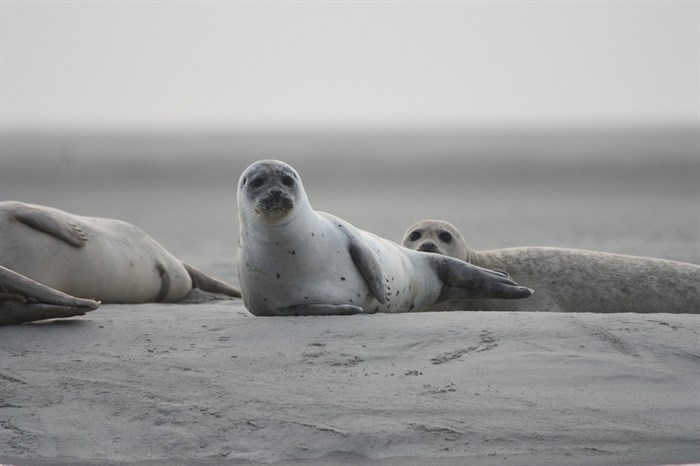
Image Credit: SUBMITTED/Pixabay
December 12, 2020 - 8:34 AM
Steelhead fish populations have reached critical levels in the Thompson and Chilcotin Rivers and a biologist saying that an increase in harbour and other seals may be the culprit.
Rob Bison, a fish stock biologist with the Ministry of Forests, Lands and Natural Resources in Kamloops gave a live-streamed presentation on factors that could be contributing to the steelhead’s decline, Tuesday night, Dec. 8.
The fish populations in the two rivers have been declining over the last 30-40 years, but it’s likely not their stream habitats that have led to the decline, he said. There were 62 fish counted in the Thompson River and 134 in the Chilcotin River this year, according to the B.C. Wildlife Federation.
READ MORE: It will take more than fishery closures to rebuild steelhead fish population: UBC researcher
The drastic decline in steelhead appears to happen when the fish reach inshore waters and are eaten by harbour seals, which Bison said can develop an appetite for certain types of fish.
But he noted that correlation doesn’t prove causation and also discussed three other less likely factors that could be contributing to the decrease in populations: competition between steelhead and other salmon, ocean conditions and freshwater conditions.
“Predation hypotheses were strongly supported, the rest were weak,” he said.
Bison estimated that by reducing seal populations, steelhead populations could increase by 486%.
Completely stopping fishing of the steelhead could also stabilize or slightly increase the steelhead population, Bison said.
Bison sited a Puget Sound steelhead study which examined smolt survival and found a correlation between fish numbers and seal abundance.
In another study that looked at declining steelhead populations in the Pacific Northwest, watersheds that drain into the ocean close to one another on a scale of 200-300 kilometres showed similar smolt survival patterns than watersheds located far apart, “and what that suggests is there’s some important processes either early on in the marine life or close to the inshore areas,” Bison said.
The “biggest decline in smolt was in watersheds that drained into the inland seas,” Bison said.
In the Strait of Georgia, seal populations have been increasing during the last 30-40 years, particularly harbour seals, as the result of marine mammal protection in the United States and Canada, Bison said.
Harbour seals predate on both salmon smolts and adults, Bison said.
A few years ago, when Bison visited the Albion test fishery, near Fort Langley, he said commercial fishermen explained how species-selective harbour seals can be when it comes to their diet.
“The experience here we were catching mainly chum salmon... at the time (when we found two steelhead and we) pulled them in over the stern they were both dead because the seals had killed them in the net and (the fishermen said) that this was very common,” Bison said.
Seals can settle in well around fishing boats, hydroelectric dams and hatcheries, whenever there’s a protein concentrated in a human-induced way, these mammals will respond, Bison said.
In the mid-2000s, a nearly 70 per cent mortality rate was recorded from steelhead smolts recorded in the Thompson watershed when they enter the Strait of Georgia, Juan de Fuca and Johnstone Straits, Bison said.
“This is a very intense period of mortality,” he said.
That mortality rate is also equal to the rate when they come back, he said.
The Puget Sound fish also experienced a similar mortality rate in the inshore areas, of about 80 per cent, he said.
Scat collected from harbour seals in the Strait of Georgia, Juan de Fuca and Johnstone Strait showed that half of all fish that were consumed were steelhead in the 2012-2013 year, roughly 360,000 steelhead smolts, which parallels the steelhead mortality rate in inshore waters.
To contact a reporter for this story, email Carli Berry or call 250-864-7494 or email the editor. You can also submit photos, videos or news tips to the newsroom and be entered to win a monthly prize draw.
We welcome your comments and opinions on our stories but play nice. We won't censor or delete comments unless they contain off-topic statements or links, unnecessary vulgarity, false facts, spam or obviously fake profiles. If you have any concerns about what you see in comments, email the editor in the link above.
News from © iNFOnews, 2020